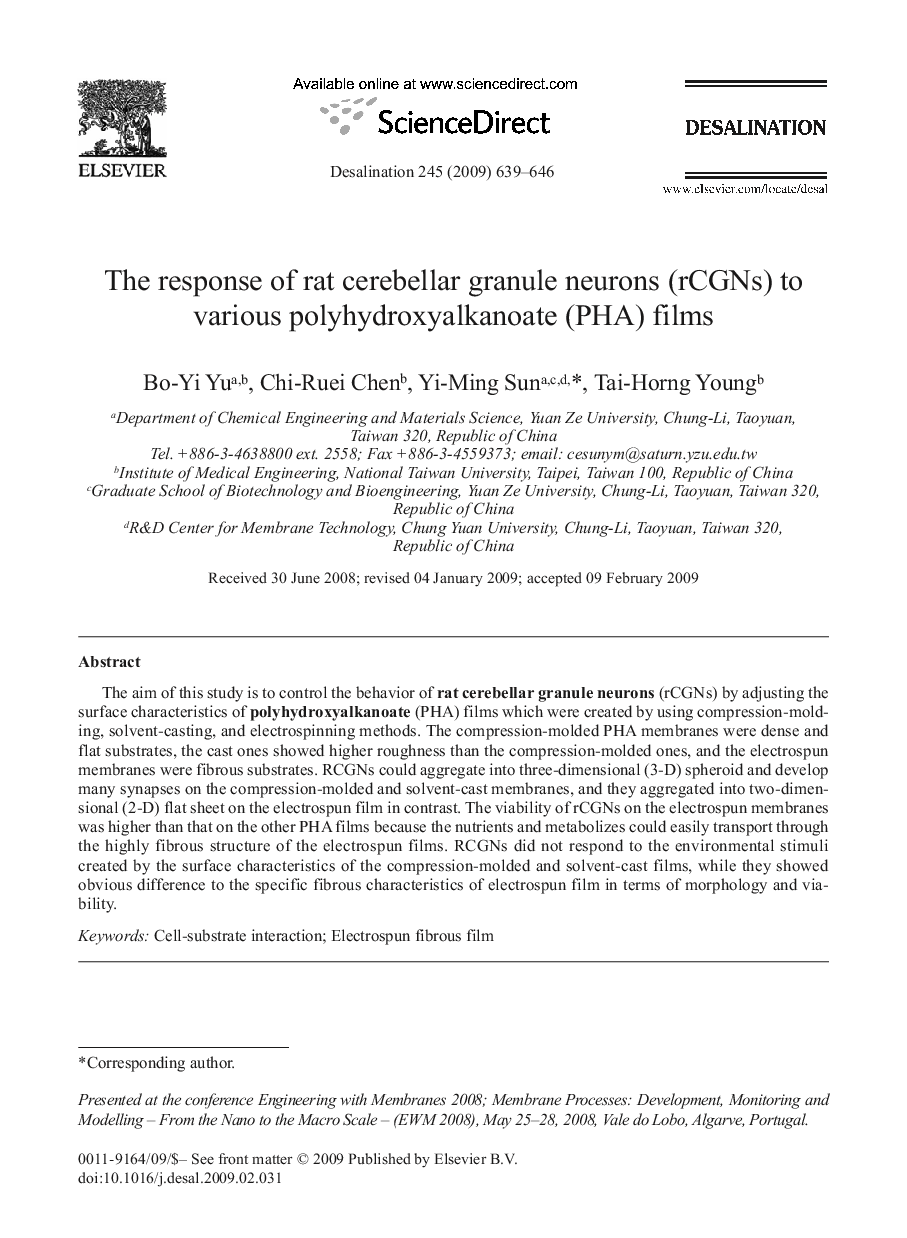| Article ID | Journal | Published Year | Pages | File Type |
|---|---|---|---|---|
| 626317 | Desalination | 2009 | 8 Pages |
Abstract
The aim of this study is to control the behavior of rat cerebellar granule neurons (rCGNs) by adjusting the surface characteristics of polyhydroxyalkanoate (PHA) films which were created by using compression-molding, solvent-casting, and electrospinning methods. The compression-molded PHA membranes were dense and flat substrates, the cast ones showed higher roughness than the compression-molded ones, and the electrospun membranes were fibrous substrates. RCGNs could aggregate into three-dimensional (3-D) spheroid and develop many synapses on the compression-molded and solvent-cast membranes, and they aggregated into two-dimensional (2-D) flat sheet on the electrospun film in contrast. The viability of rCGNs on the electrospun membranes was higher than that on the other PHA films because the nutrients and metabolizes could easily transport through the highly fibrous structure of the electrospun films. RCGNs did not respond to the environmental stimuli created by the surface characteristics of the compression-molded and solvent-cast films, while they showed obvious difference to the specific fibrous characteristics of electrospun film in terms of morphology and viability.
Keywords
Related Topics
Physical Sciences and Engineering
Chemical Engineering
Filtration and Separation
Authors
Bo-Yi Yu, Chi-Ruei Chen, Yi-Ming Sun, Tai-Horng Young,
